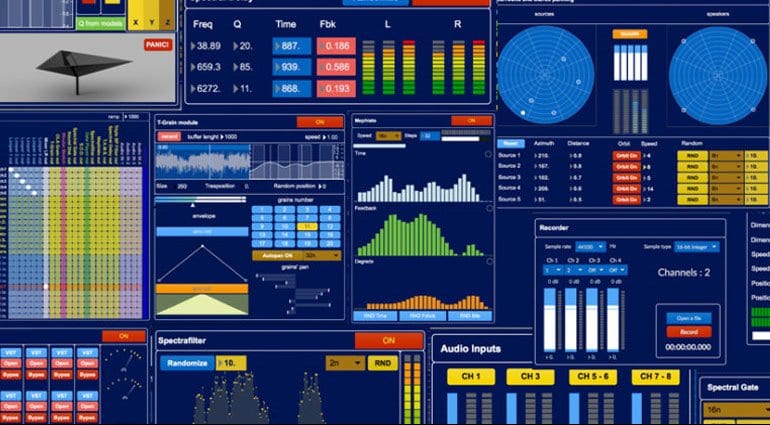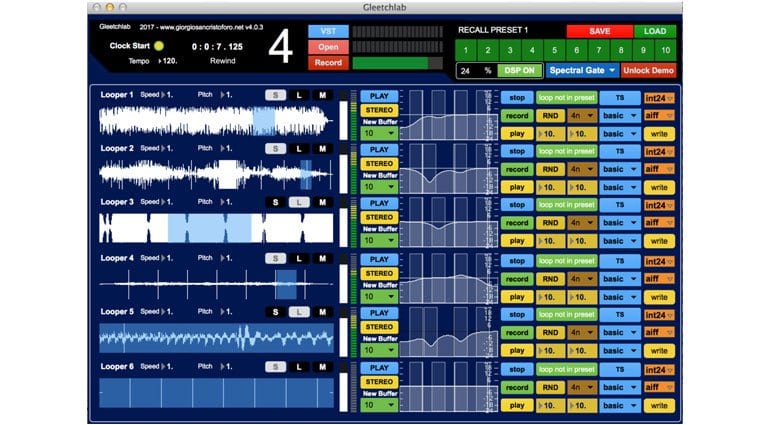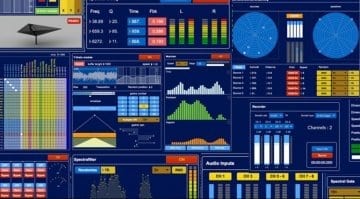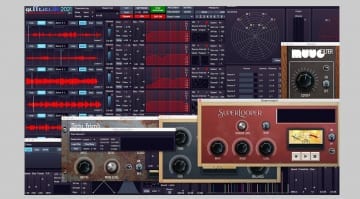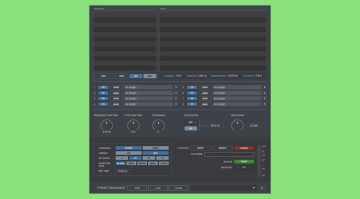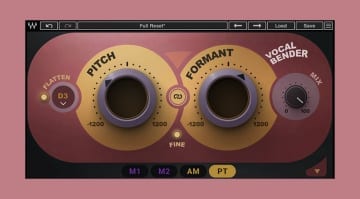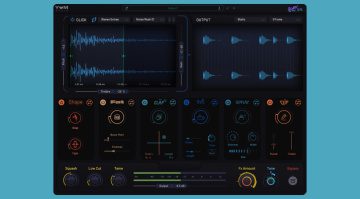Gleetchlab 4: modular DAW of audio processing and mad manipulation
Back in 2015 Giorgio Sancristoforo demonstrated Gleetchlab 4 which he had created and used to produce his latest album. He stated that is would only be available with that LP – “my music is my software, my software is my music”. But he wanted a little bit of time to polish it. 2 years later he’s finally ready to release it into the wild and now everyone can play with it.
Gleetchlab 4
It’s designed to process audio files and live sound sources in real-time. It doesn’t use any kind of timeline, instead, you mess around with your various sound sources as they play. In the manual I found this description:
Even if Gleetchlab hasn’t a timeline, it’s a full electroacoustic workstation DAW. With it you will create, process, record and reprocess samples, synths, and external sounds infinitely as an everflowing live process. It’s not a plugin! And there is no “END” anywhere in the software as there is no squencer.
Time flows and you can sync sounds if you wish but Giorgio thinks you’ll enjoy the constant changing of evolving and unconnected sounds much better. There’s a lot of randomness in numbers and parameters that have a large effect on how the sound develops.
Main Windows
The main Gleetchlab window has two parts. The upper section has the clock, outputs, presets, DSP button and menu. The lower section has six identical loop players/recorders which is where most of the action happens. But this being a modular system there are a lot more windows to look at. The Matrix window is a patchbay visualising how everything is connected to each other. For audio routing, for modulation and for experimentation you can connect everything to everything else. The final utility module is the mixer, which can be patched to from the Matrix and gives level control over five channels with the option to load VST/AU effects.
There’s currently no facility for MIDI input or VST Instruments. This will be coming in version 4.1.
Modules
Gleetchlab comes with a number of process modules that can mess with your sound sources. These include the “T-Grain” and “Ola” granular processes; “vb.Stretch” to time-stretch or pitch shift; the “Neural Distortion” complex sound destroyer; “Spectral Gate” fft processor; “Sound of Death” Gristleizer; “Spectrafilter” filterbank; “Mephisto” sequenced delay/degrader; “TAMS” modal synthesizer; “Spectral Delay” delay; “Data Player” loads up any kind of binary file and uses their sound (I have no clue as to how that works); and “Triple Resonant Bandpass Filters” which do exactly what they say on the tin.
All of these processors are available via the Matrix. Simply route your audio input, or the sampler channel output to what you want to use.
Back in the main window you have access to 10 performance presets. These let you recall either small parameter changes or completely new loop-based setups at the touch of a button.
So to try to boil it down Gleetchlab 4 runs 6 loopers in new and randomised ways, while being Gristleized, filtered, stretched, degraded and delayed, in real-time, with external sources and recallable presets. It’s weird and fascinating, with a way of generating evolving soundscapes and developing noises. I’ve had the video running in the background now for quite some time and it’s completely sublime. Also, check out the SoundCloud tracks on the webpage.
It’s completely free to try for 8 minutes at a time or if you want to use it for longer then you’re going to have to find 15 whole Euros. It’s for Apple Mac only and available now.
More information
- Gleetchlab webpage
Video
https://vimeo.com/242563764

 5,0 / 5,0 |
5,0 / 5,0 | 